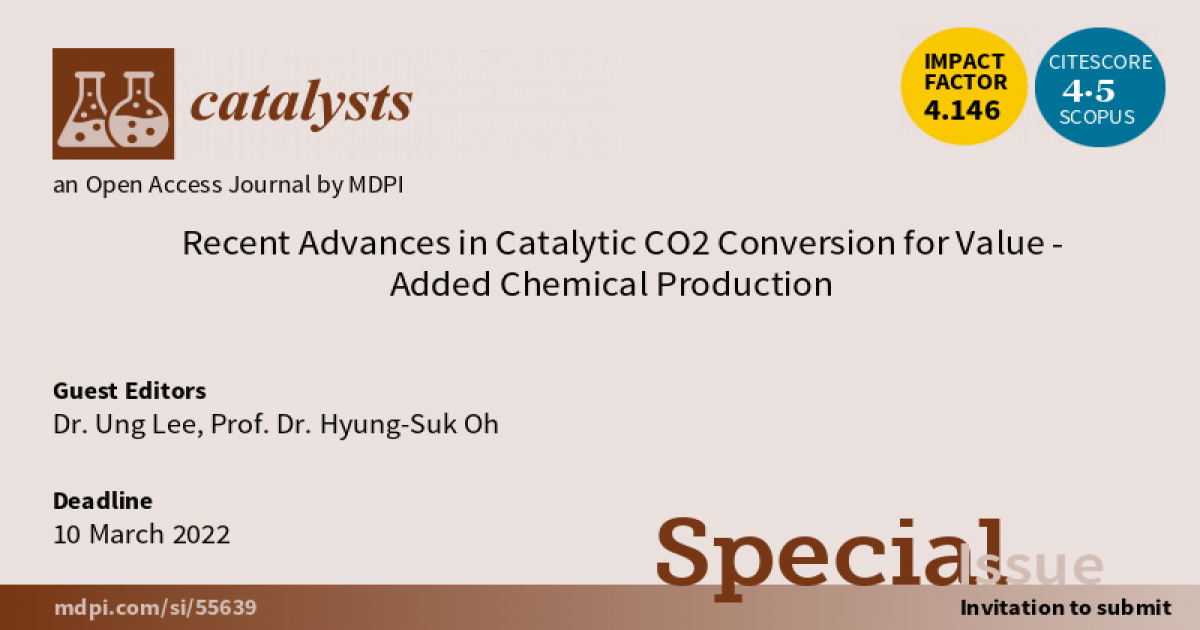Recent Advances in Catalytic CO2 Conversion for Value-Added Chemical Production
A special issue of Catalysts (ISSN 2073-4344). This special issue belongs to the section "Environmental Catalysis".
Deadline for manuscript submissions: closed (10 March 2022) | Viewed by 24970

Special Issue Editors
Interests: CO2 hydrogenation; electrochemical CO2 reduction; Process systems engineering; optimization; Machine learning; Bayesian optimization
Special Issue Information
Dear Colleagues,
The atmospheric CO2 concentration reached 410 ppm in 2018 as identified by the Mauna Loa observatory, and its increasing rate has been accelerated up to an annual increase of 2.87 ppm year-1 which is ca. 100 times faster than the level at the end of the last ice age. A lot of issues about climate change including global warming, ocean acidification, and ecosystem destruction, caused by greenhouse gas emissions have led to the Paris Agreement in which many countries submitted their targets for mitigating carbon emission. A recent projection on climate change suggests that warming can be kept below 1.5 °C (compared to the pre-industrial level) with a probability of more than 50% even if existing CO2-emitting infrastructures will be used until their lifetime, while delaying necessary actions significantly reduces the probability.
Catalytic CO2 conversion is a promising option for mitigating greenhouse gases while maintaining the economic feasibility of chemical production processes. Catalytic CO2 conversion may include 1) thermochemical catalytic CO2 conversion, 2) electrochemical CO2 reduction, and 3) biological CO2 capture and conversion. Amongst them, several research topics such as CO2 hydrogenation and electrochemical CO2 reduction processes are highlighted for the practical application of value-added chemical production as large-scale demonstration projects have successfully demonstrated the economic feasibility of CO2 utilization. This Special Issue on catalytic CO2 conversion will present an overview of currently applied techniques for CO2 conversion, focusing on their advantages, and disadvantages and on the main challenges facing their large-scale application.
Guest Editor
Prof. Dr. Hyung-Suk, Oh
Prof. Dr. Ung Lee
Keywords
- Carbon dioxide
- Heterogeneous catalysis
- Photocatalysis
- Electrocatalysis
- Biocatalysis
- Techno-economic analysis
- Life cycle assessment






